TOPIC : THE ANALYSIS OF THE VALIDITY AND PROCEDURE OF CAPITAL PUNISHMENT IN INDIA
THE CONTEXT: The Supreme Court recently asked the Union Government to defend the law that allows hanging by the neck as a mode of execution. A bench led by the Chief Justice of India (CJI is essentially contemplating over whether there can be a more humane and dignified way of executing the death penalty. The following article intends to analyse the provisions for the death penalty in India from UPSC perspective.
CAPITAL PUNISHMENT: THE CASE IN QUESTION
- In 2017, an advocate, filed a public interest petition (PIL) seeking a more dignified way to execute the capital punishment. He argued that a convict whose life has to end because of the conviction and the sentence should not be compelled to suffer the pain of hanging.
- The plea in the PIL challenged the constitutional validity of Section 354(5) of the Code of Criminal Procedure (CrPC), 1973. This provision reads: “When any person is sentenced to death, the sentence shall direct that he be hanged by the neck till he is dead.”
- The SC had agreed to hear the 2017 PIL, and had issued notice to the Centre. Court records show that in January 2018, the Centre filed an affidavit defending the current position of law, but the case had not been listed since then.
CAPITAL PUNISHMENT: A HISTORICAL PRACTICE IN INDIA
- The necessity of the death penalty has been beautifully demonstrated by Kalidas. Historical and mythological epics like the Ramayana and Mahabharata have also asserted the need for the death penalty by stating that the king’s highest priority is to keep society safe from threats of all kinds, which can be done by putting the wrongdoer to death. In addition, both Katyayana and Brahaspati supported the death penalty.
- Even during the time of the Buddha, when Ahimsa was the code of conduct, Ashoka did not think that the death penalty was unjust. The fundamental tenets of the Dand Niti in India were deterrence and mental health. The notions of social security and non-correctional philosophy are undeniably prevalent in the Hindu criminal justice system.
- Manu has made excellent notes of both the objective and subjective conditions. Manu Smriti, a famous work of Manu, portrays the crime and the perpetrator’s weakness. Kautilya also discussed the death penalty in his writings because, in his view, it is an essential tool for ensuring public safety.
CAPITAL PUNISHMENT IN INDIA: CONSTITUTIONAL AND LEGAL PROVISIONS
- Article 21 of the Constitution of India guarantees the right to life and personal liberty to every citizen, but it also provides an exception in the case of the death penalty. The article states that a person can be deprived of their life only in accordance with the procedure established by law.
- Section 354(3) of the Code of Criminal Procedure (CrPC) provides a method to execute the death penalty, i.e., “Hanging by the neck until dead.” Also, this provision states that “When the conviction is for an offence punishable with death or, in the alternative, with imprisonment for life or imprisonment for a term of years, the judgment shall state the reasons for the sentence awarded, and, in the case of sentence of death, the special reasons for such sentence.” Capital punishment, also known as the death penalty, is awarded in the rarest of the rare cases.
- The Indian Penal Code (IPC) provides for the death penalty as a punishment for certain offenses such as murder (section 302), terrorism (section 121), waging war against the Government of India (section 121A), abatement of mutiny (Section 132) and certain acts of piracy (section 364A). The IPC also provides for the death penalty in cases of repeat offenses of rape and other sexual offenses under the Protection of Children from Sexual Offences (POCSO) Act.
- The Commission of Sati (Prevention) Act, 1987: Any person involved in the commission of Sati directly or indirectly is subject to the death penalty under The Commission of Sati (Prevention) Act, 1987.
- Narcotic Drugs and Psychotropic Substances (NDPS) Act, 1985: Based on previous convictions, Section 31A of the NDPS Act has introduced the death penalty for providing financial support or taking part in the production or sale of narcotics or psychoactive substances in a predetermined amount (e.g., opium 10 kg, cocaine 500 grammes).
- The Scheduled Castes and Scheduled Tribes (Prevention of Atrocities) Act, 1989: Forging evidence that leads to the conviction and execution of an innocent member of a scheduled caste or tribe is punishable by death under the Act.
- Army Act, 1950; Air Force Act, 1950 and Navy Act, 1957: Various offences committed by members of the military forces under military laws like the Army Act, 1950; Air Force Act, 1950, and Navy Act, 1957, may also be punishable by death.
CATEGORY OF OFFENDERS EXEMPTED FROM CAPITAL PUNISHMENT IN INDIA
- Minors: According to Indian laws, a person who committed a crime while still a minor, that is, before the age of 18, cannot be executed. The lawmakers decided to include minors in the group of offenders exempted from the death penalty because they thought that anyone who hasn’t reached adulthood has room for improvement and might be able to learn from his mistakes by being given the right environment and education.
- Pregnant woman: Pregnant women were added to the list of criminals who are excluded from the death penalty. According to Section 416 of the CrPC, if the high court finds that a woman who has been awarded the death sentence is pregnant then such sentence can be postponed or commuted to life imprisonment.
- Intellectually disabled: According to the law, anyone who is intellectually disabled or challenged may fall under the category of offenders who are exempted from the death penalty. If a person committing a serious crime is unable to comprehend the nature and consequences of their actions, this is sometimes referred to as having an intellectual disability.
CAPITAL PUNISHMENT: KEY FACTS
- After independence, Godse was the first person to be executed in India by the death penalty in the case of Mahatma Gandhi. India’s Supreme Court suggested the death penalty should only be imposed on the rarest of rare cases in India.
- As per the “Death Penalty in India: Annual Statistics 2022” report of Project 39A of National Law University (NLU):
- Even as the Supreme Court called for reforming death penalty sentencing, the year 2022 saw 165 death sentences handed out by trial courts, the highest in over two decades.
- Among the 165 death sentences handed out in 2022, 51.28% of cases involved crimes related to sexual violence.
- At the end of 2021, more than two thirds of the world’s countries had abolished the death penalty in law or practice. 108 countries, a majority of the world’s states, had abolished the death penalty in law for all crimes.
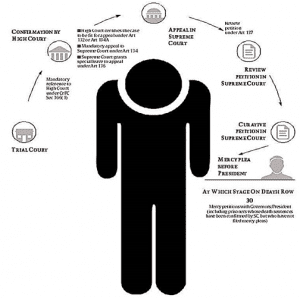
CAPITAL PUNISHMENT: SOME LANDMARK JUDGEMENTS
- Jagmohan Singh V/s State of UP (1973):
- The Supreme Court held that according to Article 21, deprivation of life is constitutionally permissible if that is done according to the procedure established by law.
- Bachan Singh v/s. State of Punjab (1980):
- This Case may be a corner judgment given by 5 judges Bench of the Hon’ble Supreme Court. In this case Supreme Court pointed out some important limitations on the prosecution by setting the rarest of the rare doctrine. The Supreme Court said:
- A real and abiding concern for the quality of mortal life presuppositions resistance to taking a life through law’s machinery. That ought not to be done except in rarest or the rare cases where the choice opinion is clearly foreclosed.
- Machhi Singh V/s State of Punjab (1983):
- The Supreme Court outlined certain factors that determine whether a case should be considered rarest of rare. The Supreme Court listed the two questions that need to be answered prior to the imposition of the death sentence on individual cases.
- Firstly, is the offence committed so exceptional that there is no scope for awarding any other sentence.
- Secondly, even when weightage is accorded to the mitigating circumstances does the circumstances still warrant the death penalty.
- Shatrughan Chauhan & Anr v. Union of India (2014):
- The Supreme Court while commuting the death sentence of all 15 convicts into life imprisonment held that undue, inordinate and unreasonable delay in disposing of the mercy petition is in itself a sufficient ground to entitle the convict to pray for commutation. The delay in rejecting the mercy plea by the President amounts to torture and is a clear violation of Article 21 of the convicts’ rights.
- Shabnam v/s State of Uttar Pradesh (2015):
- This case is a historical case because Shabnam will be the first women after independence who has got the punishment of death penalty.
- Shabnam and Saleem, both in their 20s also, were condemned of killing seven members of Shabnam’s family. With all of them gone, she’d have been the sole inheritor to the family property. They were arrested five days latterly. At that point, Shabnam was 7 weeks pregnant. In December that time, she gave birth to a son, Mohammad Taj. He’s presently living with Shabnam’s council inferior Usman Saifi and his woman.
- Mukesh and Anr v/s NCT Delhi (2017):
- On 5 May 2017, the Supreme Court rejected the convicts appeal and saying that they had committed a barbaric crime that had shaken society’s heart, the court upheld the death judgment of the four who had been charged with the murder. The verdict was well entered by the family of the victim and the civil society.
CAPITAL PUNISHMENT: ARGUMENTS FOR AND AGAINST
ARGUMENTS IN FAVOUR
- Deterrence: One of the main arguments in favour of the death penalty is that it serves as a deterrent to would-be offenders. Proponents of capital punishment argue that the fear of being executed can deter individuals from committing serious crimes such as murder, terrorism, and treason.
- Retribution: Another argument in favour of the death penalty is that it serves as a form of retribution as it provides a sense of closure and justice for the victim’s family.
- The supporters sometimes mention that “an eye for an eye” is appropriate, the punishment should match the crime, and the penalty should be a moral response to the crime.
- Article 21 of the Indian Constitution adds that no person shall be deprived of his life or personal liberty except according to procedure established by law.
- This has been legally construed to mean if there is a procedure, which is fair and valid, then the state by framing a law can deprive a person of his life.
- Justice: Supporters of capital punishment believe that the death penalty is a just punishment for heinous crimes such as murder, terrorism, and treason.
- Cost-effective: Proponents of the death penalty argue that it is a cost-effective way of dealing with serious crimes. They argue that keeping offenders in prison for life is more expensive than carrying out an execution.
- This can be seen in debates surrounding the hanging of 26/11 terrorist Ajmal Kasab.
- Public opinion: Death penalty is supported by a majority of the Indian population, and that it reflects the collective will of the people. Abolishing the death penalty would go against the wishes of the people.
- This was visible during Nirbhaya and Hyderabad rape cases. Also, a nation-wide survey conducted for public opinion in 2017 had 70% votes in favour of capital punishment.
- According to Amnesty International, 55 countries around the world have the death sentence on the books. While death by hanging is still the most prevalent form of execution, other modes are followed in some countries.
ARGUMENTS AGAINST
- Against reformative theory of justice: It is a perspective that emphasizes the rehabilitation and reform of offenders as the primary goal of the criminal justice system. According to this theory, the primary purpose of punishment is not to inflict retribution on offenders or to deter others from committing crimes but to help offenders change their behaviour and become law-abiding citizens.
- Human rights: Opponents of the death penalty argue that it violates the right to life, which is enshrined in the Indian Constitution and international human rights law.
- Discrimination: Critics of capital punishment argue that it is applied disproportionately to marginalized communities and economically disadvantaged individuals, who may not have access to competent legal representation.
- According to the national figures, 74.1% of the prisoners sentenced to death in India are economically vulnerable according to their occupation and landholding and most death row prisoners belong to the lower strata of society.
- Ineffectiveness: Opponents of the death penalty argue that it is not an effective deterrent to crime.
- For example, death has been prescribed in rape cases since 2013 (Sec. 376A of IPC), still, rapes continue to happen and in fact, the brutality of rapes has increased manifold. This compels one to think whether the death penalty is an effective deterrent to crime or not.
- Morality: Some opponents of capital punishment argue that it is morally wrong to take the life of another human being, regardless of the crime they may have committed.
- Even Gandhiji upheld the idea that “an eye for an eye would make the whole world blind.” He promoted that the crime should be eliminated, not the criminal.
THE WAY FORWARD:
- Views of Supreme Court:
- In response to concerns about the way courts award the death penalty, the Supreme Court has suo motu started a review of the process. The apex court will consider laying down guidelines for determining mitigating circumstances in death penalty cases.
- The SC stated that the accused must have a meaningful, real and effective hearing, along with the chance to introduce evidence relevant to the sentence question.
- Supreme Court also suggested that while delivering judgement in case related to the death penalty, the convict’s social background, age, educational levels should be taken into account, except in cases related to terror activities.
- In 2015, the Law Commission of India recommended the abolition of the death penalty in India, arguing that it has not been shown to have a deterrent effect and that it is prone to errors and can be used arbitrarily.
- India is a signatory to various international treaties such as the International Covenant on Civil and Political Rights (ICCPR) and the Convention on the Rights of the Child (CRC), which call for the abolition of the death penalty. However, India has not yet abolished the death penalty and retains it as a legal punishment. This should be looked upon for bringing a reformative outlook to the society.
- In its 187th report in 2003, the Law Commission of India recommended that Section 354(5) of the CrPC should be amended by providing an alternative mode of execution of death sentence by “lethal injection until the accused is dead”.
- In the United States, for example, an intravenous lethal injection is given in every state (27 states and American Samoa) that allows the death penalty. Electrocution is a secondary method in some states. Execution by firing squad is employed in China, and Saudi Arabia uses beheading apart from other methods.
- There is also an ever-increasing demand for reforms in the criminal justice system which is largely based on the colonial ideology and needs. Such reforms should include a more modern and liberal outlook towards issues like the death penalty.
- The government must play an active role in improving the social status (health, education, rights, etc.) of the people that could possibly become a deterrent factor for actions that could lead to capital punishment. For example, a well educated western society rarely sees heinous crimes on women and children.
THE CONCLUSION: Capital punishment or the death penalty have always been a content of contradiction not only in India but also in several advanced countries. In India, the motive for the punishment is rested on two aspects; the primary being that the lawbreaker should suffer for the pain and injury he/ she cast upon the victim and another motive is to discourage others from committing wrongs by sanctioning corrections. However, the court of law must consider the aspect of inherent goodness in human beings. No person becomes a criminal by birth. A careful background check must be ensured before awarding capital punishment so as to distinguish the willful offenders from those who want to be reformed.
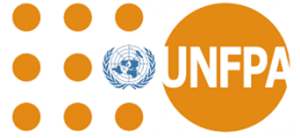

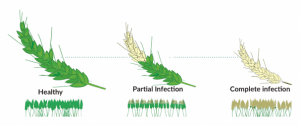
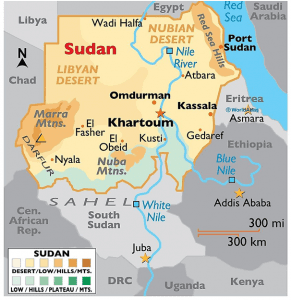

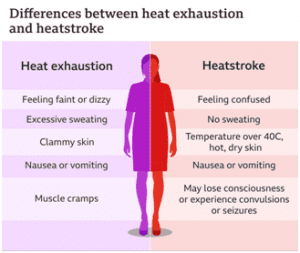
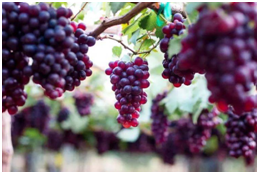
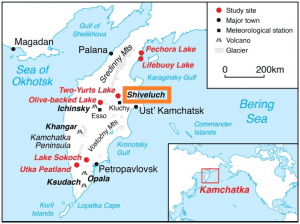



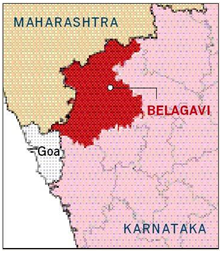 lines. In 1957, unhappy with the demarcation of boundaries, Maharashtra demanded realignment of its border with Karnataka.
lines. In 1957, unhappy with the demarcation of boundaries, Maharashtra demanded realignment of its border with Karnataka.